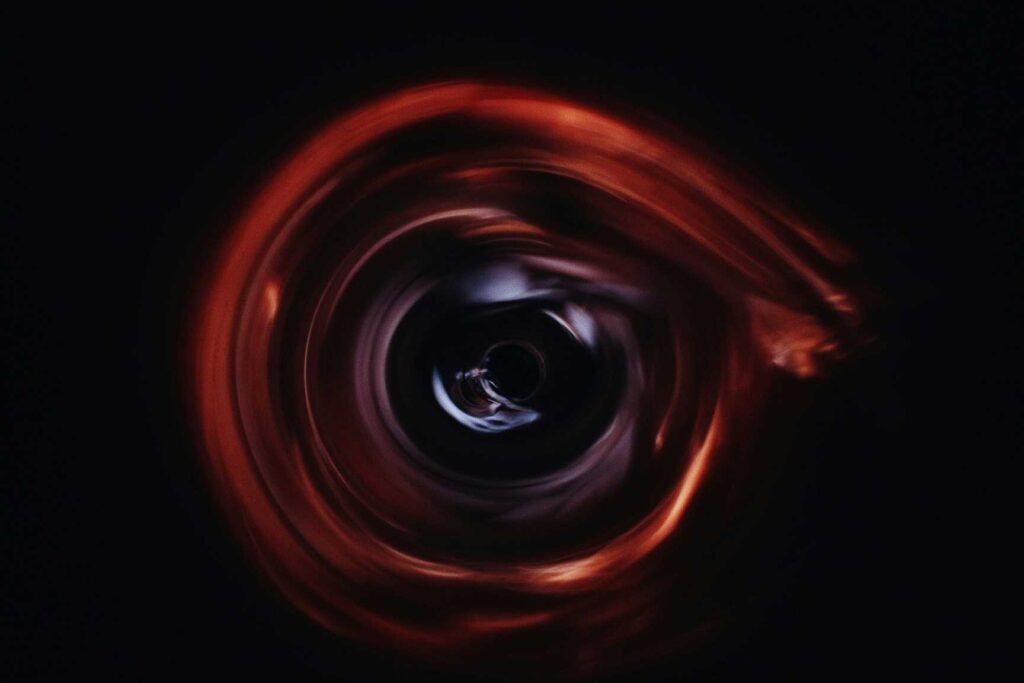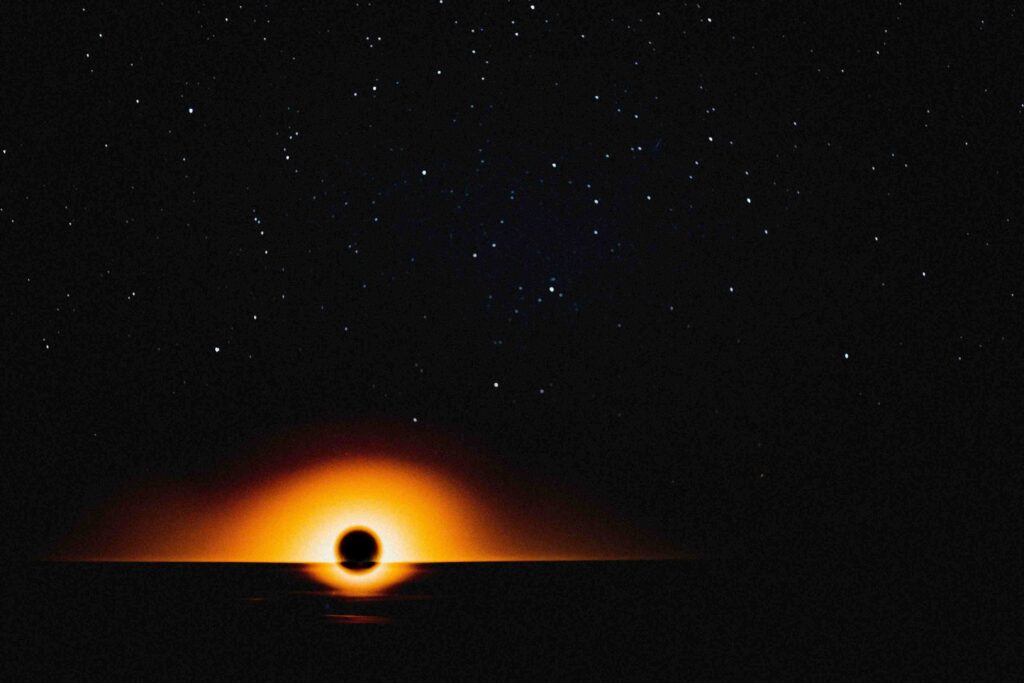Black holes are mysterious objects in space that form when massive stars collapse under their own gravity. As they grow, they become even more fascinating and face some intriguing limits. Let’s take a closer look at what happens when black holes become incredibly huge:
- Formation and Singularity:
When a really big star runs out of fuel, it collapses because of its strong gravity.
If the core of the star is very heavy (about 3 times the mass of our Sun), it becomes a black hole.
Inside a black hole, there’s a point called a singularity, where everything is squeezed into a tiny, super-dense spot. - Supermassive Black Holes:
These super big black holes hang out in the middle of galaxies, and they can be millions or even billions of times heavier than our Sun.
They’re so heavy that they affect how galaxies look and how stars are born.
These giants get bigger by eating up stuff like stars, gas, and dust. - Radiation and Energy Balance:
Black holes give off energy through something called Hawking radiation, which was thought up by a scientist named Stephen Hawking.
But here’s the interesting part: when a black hole gets really, really big, it can absorb more energy from the stuff around it than it gives off.
This might mess with the gas that’s supposed to feed the black hole and change how stars are born nearby. - Unseen Threats:
Black holes can be surrounded by rings of gas and dust that give off light in different colors, like X-rays.
Now, let’s talk about the event horizon of a black hole:
The event horizon is like the outer edge of a black hole. Here’s what’s cool about it:
Definition:

- The event horizon is like the invisible surface of a black hole.
- Once something crosses this boundary, it can’t escape because the black hole’s gravity is super strong.
Escape Velocity and Cosmic Gatekeeping:
- Imagine a speed limit in space – that’s how fast something needs to go to escape a black hole’s gravity.
- At the event horizon, the speed needed to escape is as fast as light – the fastest speed possible!
- So, nothing, not even light, can escape from inside the event horizon.
Ultimate Prison Wall:
- As something gets closer to the event horizon, it looks like it’s fading away because of how gravity bends light.
- At the event horizon, it’s like the object disappears because it’s been sucked into the black hole.
- Inside the black hole, everything is squished into a tiny point called a singularity, where the rules of physics we know might not apply anymore.
Black hole’s event horizon is related to its mass:
The size of a black hole’s event horizon depends on how heavy the black hole is. Here’s how it works:
The equation for the Schwarzschild radius (denoted as Rs) reveals this relationship:
[ R_s = \frac{{2GM}}{{c^2}} ]
Here:
- (R_s) represents the size of the event horizon.
- (G) is the gravitational constant.
- (M) denotes the mass of the black hole.
- (c) is the speed of light.
How does the size of a supermassive black hole’s event horizon compare to that of stellar-mass black holes?
There’s a special equation called the Schwarzschild radius that tells us the size of the event horizon.
It’s like a black hole’s personal bubble that depends on how much stuff it has – the more stuff, the bigger the bubble. Finally, let’s compare supermassive black holes to smaller ones:
Supermassive Black Holes (SMBHs):
- These are the heavyweights of the black hole world, with millions or billions of times the mass of our Sun.
- Their event horizons are huge and stretch far away from the center.
- Near them, the forces aren’t as strong as those around smaller black holes.

Stellar-Mass Black Holes:
- These are the smaller black holes, with masses ranging from about 10 to 100 times that of our Sun.
- Their event horizons are much smaller and closer to the center.
- Near them, the forces are much stronger.
So, even though all black holes have event horizons, they come in different sizes depending on how much stuff they’ve gobbled up!
Conclusion:
So, that’s the story of black holes—those mysterious cosmic objects that capture our imagination and challenge our understanding of the universe. From their birth as collapsed stars to their immense sizes and strange properties, black holes continue to fascinate scientists and astronomers.
As we learn more about black holes, we discover new puzzles and questions that keep us searching for answers. Whether it’s understanding what happens at the center of a black hole or exploring the secrets of their event horizons, there’s always more to learn.
With advancing technology and ongoing research, we can look forward to unraveling the mysteries of black holes and gaining deeper insights into the nature of space and time. Who knows what other secrets the universe holds?
What happens if you fall into a black hole?
Falling into a black hole is like falling into a deep, dark pit. As you get closer to the center, the gravity gets stronger and stronger, pulling you in. Eventually, you reach a point called the singularity, where everything gets squished into a tiny dot. It’s a one-way trip—you can’t come back out.
Can black holes die?
Black holes don’t die in the same way that living things do, but they can slowly evaporate over time. This happens through a process called Hawking radiation, where they lose mass and eventually disappear completely.
How do we know black holes exist if we can’t see them?
We can’t see black holes directly because they don’t give off any light. But we can see the effects they have on nearby objects, like stars and gas clouds. We can also detect the X-rays and other radiation that come from matter falling into black holes.
Are black holes dangerous to Earth?
Black holes that are far away from Earth don’t pose any danger to us. But if a black hole were to come too close, its strong gravity could disrupt the orbits of planets and other objects in our solar system. Luckily, the chances of that happening are very low.
Can anything escape from a black hole?
Once something gets too close to a black hole, it’s trapped by its gravity and can’t escape. Even light, which is the fastest thing in the universe, can’t break free from a black hole’s grip. But there’s still a lot we don’t know about what happens inside black holes, so it’s a mystery whether anything can ever get out.

